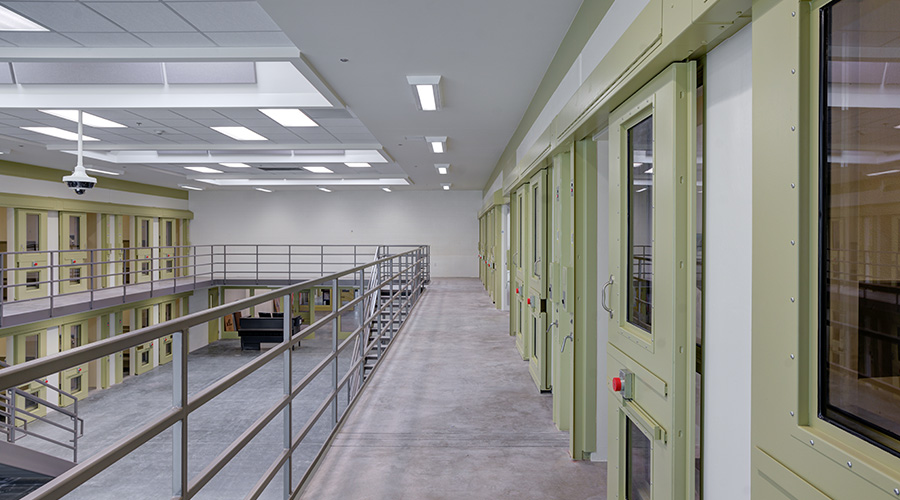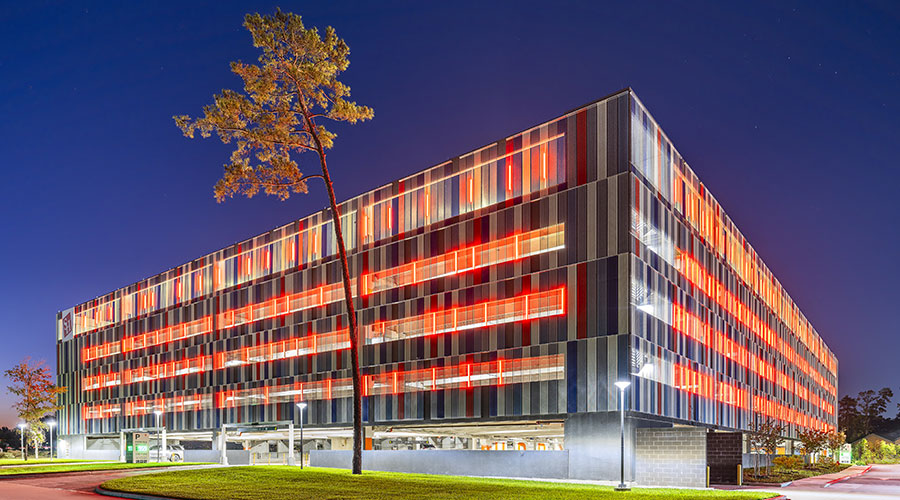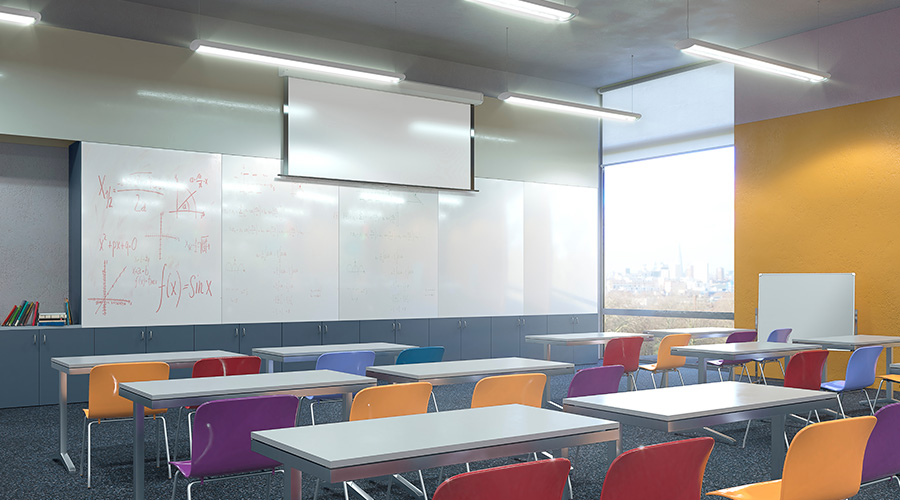Prismatic Versus Parabolic Fixtures
Over time, ideas about what constitutes good lighting sometimes change. It used to be common to use a prismatic lens in a troffer to spread the light out evenly and slightly reduce glare by refracting the lamp image over greater surface area, rather than having the bare lamp visible. Studies found that glare from prismatic lenses was distracting and caused headaches because of the contrast of very high and uneven brightness above the eyes and much lower light levels at the task.
Over the years, prismatic lens fixtures were supplanted by polished aluminum parabolic louvers in recessed fluorescent troffers. The idea was to push the light down while eliminating excessive brightness. In fact, the louvers were so well-designed that they eliminated all fixture brightness and become dark holes in the ceiling. This allowed offices to reduce the light levels required to complete a task. With the parabolic louvers, occupants’ pupils didn’t need to contract to compensate for very bright fixtures, so they could take in more of the light available at the task.
After years of using very low brightness louvers, studies discovered that occupants were actually more comfortable when they were able to identify a light source in the room. People’s primary experience of light begins with the sun and a sky. The perception of a space lighted with highly reflective parabolic louvers was repeatedly described was “cave-like” due to the dark walls and the dark ceiling.
Related Topics:















